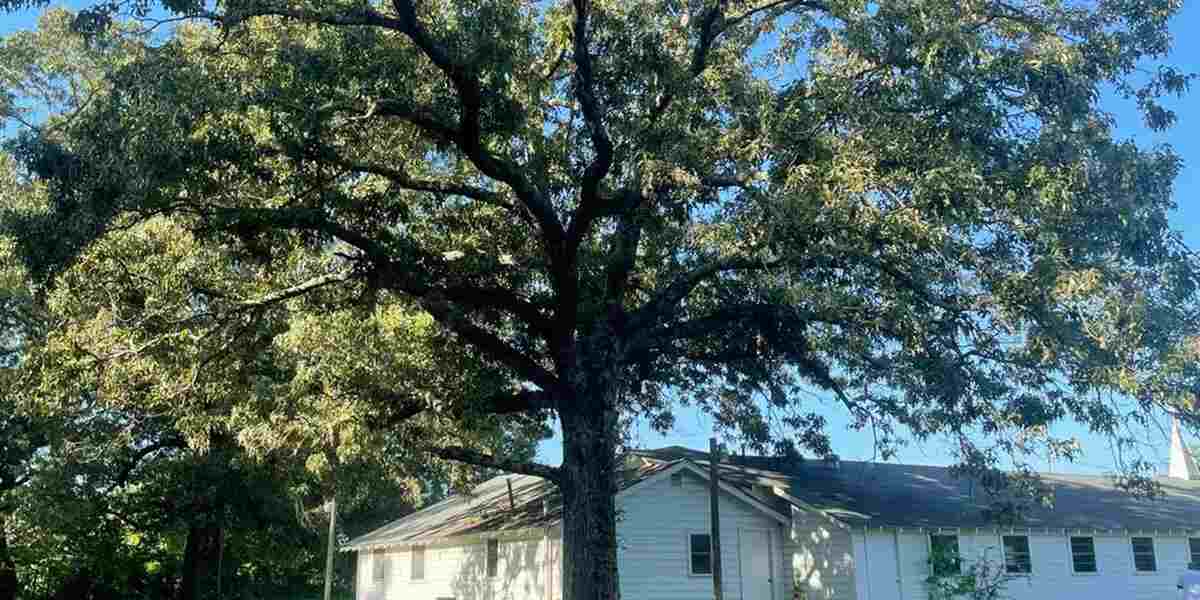Have you ever found yourself gazing up at a towering tree and wondered, “Do trees ever stop growing?” At Hawkins Tree and Landscaping, we understand your curiosity. Trees are fascinating organisms, and their growth patterns can be equally intriguing.
In this guide, we explain the factors that influence tree growth and answer the question, “Do trees ever stop growing?” For more insights into tree growth and care, check out Texarkana’s expert tree trimming and pruning service from Hawkins Tree and Landscaping. We can help you maintain trees that are as healthy as they are beautiful.

How Long Does It Take for a Tree to Grow?
The growth rate of a tree depends on various factors, including its species, environmental conditions, and care. Here are some general timelines:
- Most trees reach their full height in ten to 30 years.
- Some trees, like oaks and maples, can continue to grow for up to 100 years.
- Giant sequoias and redwoods can grow for more than a thousand years.
When Do Trees Stop Growing?
The simple answer to “Do trees ever stop growing?” is no; trees never completely stop growing. However, the growth pattern changes as a tree matures.
Once a tree reaches its full height, it focuses more on expanding its girth and developing a denser canopy, especially noticeable in dormant trees during the off-growing season. This is why older trees are often wider and have more branches.
In addition to these changes, trees also undergo other transformations as they age. Here are some key aspects of tree growth that you might find interesting:
- Secondary Growth: This refers to the thickening of the tree, which happens when the cambium (a layer of cells between the wood and bark) produces new cells. This process results in the tree expanding in girth.
- Root Expansion: As trees mature, their root systems also continue to grow and spread, which underscores the importance of watering mature trees appropriately to support their expanding needs.
- Bark Development: The bark of a tree thickens and becomes more textured with age. This serves as a protective layer against pests, diseases, and harsh weather conditions.
- Branch and Leaf Density: Older trees often have more branches and leaves, contributing to a denser canopy. This increased leaf density allows the tree to maximize photosynthesis, the process by which it converts sunlight into energy.
For more information on tree growth and care, visit this comprehensive guide on pruning landscape trees.
Why Are Trees Tall?
Trees grow tall to compete for sunlight, a vital resource for photosynthesis. Here are some reasons why trees of the same species can have different heights:
- Light availability: Trees in dense forests grow taller to reach sunlight.
- Soil quality: Nutrient-rich soil promotes tree growth.
- Water availability: Adequate water supply can enhance tree growth.
Hawkins Tree and Landscaping’s Take on Tree Growth
At Hawkins Tree and Landscaping, we believe that understanding tree growth can help you make informed decisions about tree care. Whether it’s trimming trees to prevent root growth or providing the right nutrients, we’re here to help. With the right guidance, effort, and care, you can maintain a stunning landscape that has beautiful and healthy trees.
So, do trees ever stop growing? The simple answer is: not really. While they may stop getting taller at a certain point, they continue to expand in girth and develop a denser canopy.
If you’re in the Texarkana, AR, area and have questions about tree growth or need assistance with tree care, don’t hesitate to reach out to us at (870) 330-9912. We’re committed to helping you understand and care for the trees in your landscape.

